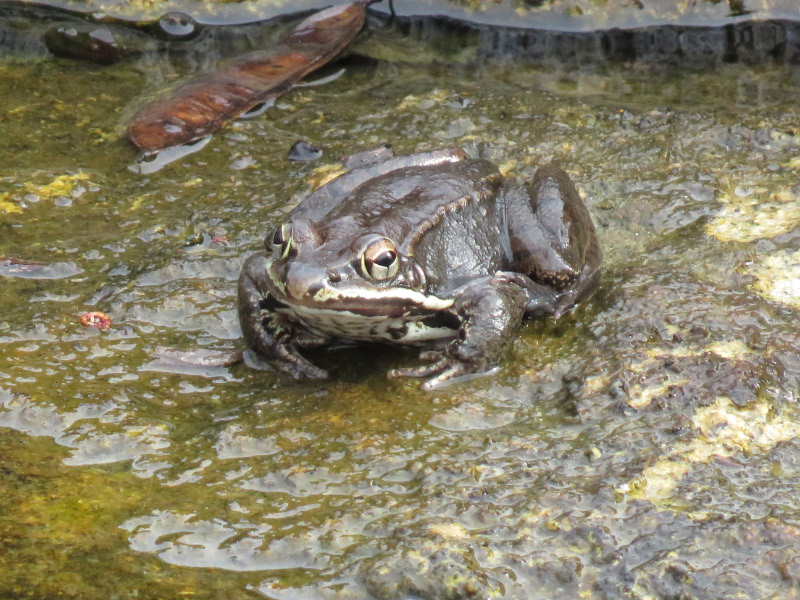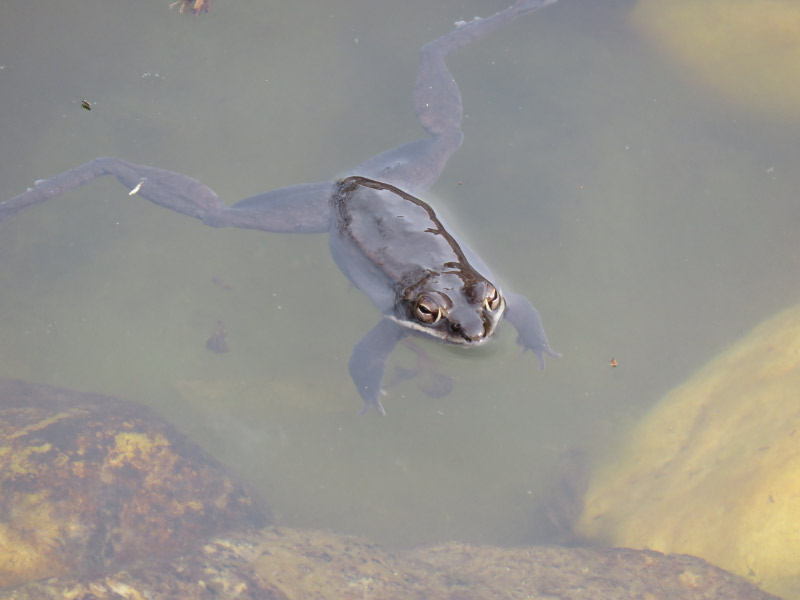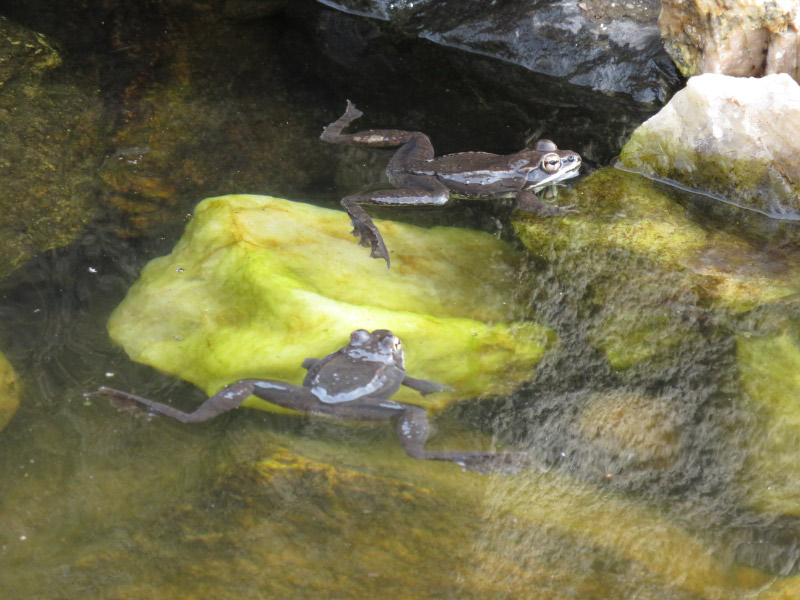Mt Pleasant Farm – March 2016
/There are signs of spring at the Howard County Conservancy’s Mt. Pleasant Farm but the trees still look very bare. Earlier in the month I posted about the Wood Frogs in the Honors Garden pool. Last week, the frogs (and their loud clacking) were gone, but the tadpoles were beginning to hatch. They were easiest to see on the rocks. They are algae eaters and the little pool has plenty for them to eat. Notice that there is also a tiny snail just above the water line.
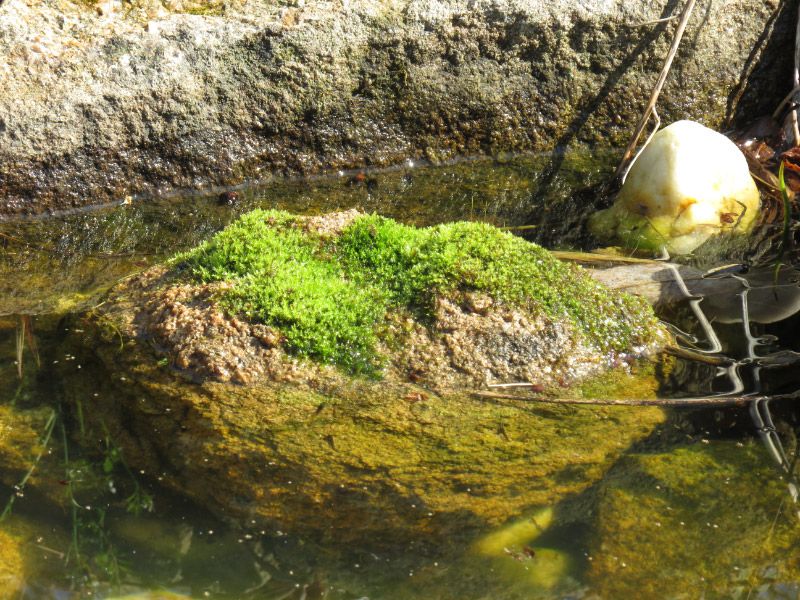
The moss growing on the parts of the rocks above the water looks very green right now. Soon there will be a lot more tadpoles in the water below since there is a large egg mass that has not hatched near this rock.

I took advantages of the absence of leaves to capture a stump that is usually hidden by brush. It has shelf fungus
And wood pecker holes
And lots of moss growing on it.

It is near the spot where skunk cabbage grows (previous post is here).
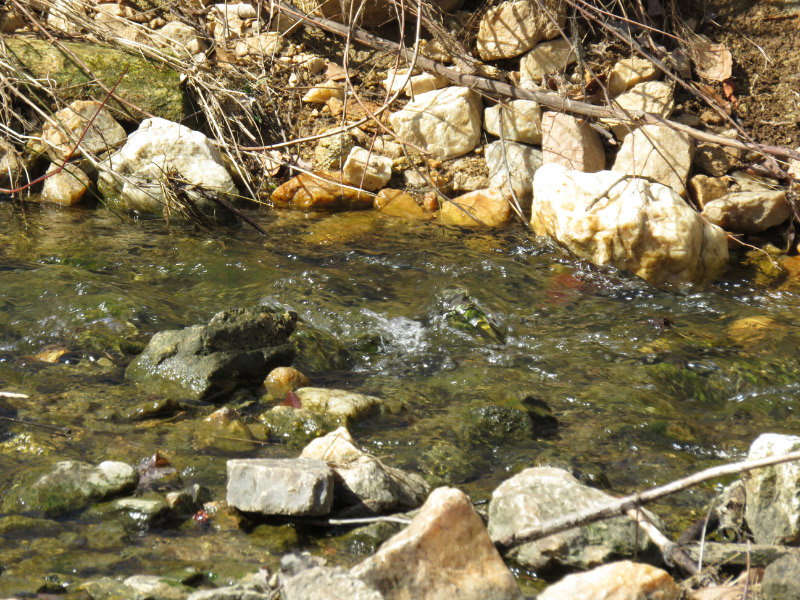
The streams are gurgling (and the paths are usually muddy) this time of year.
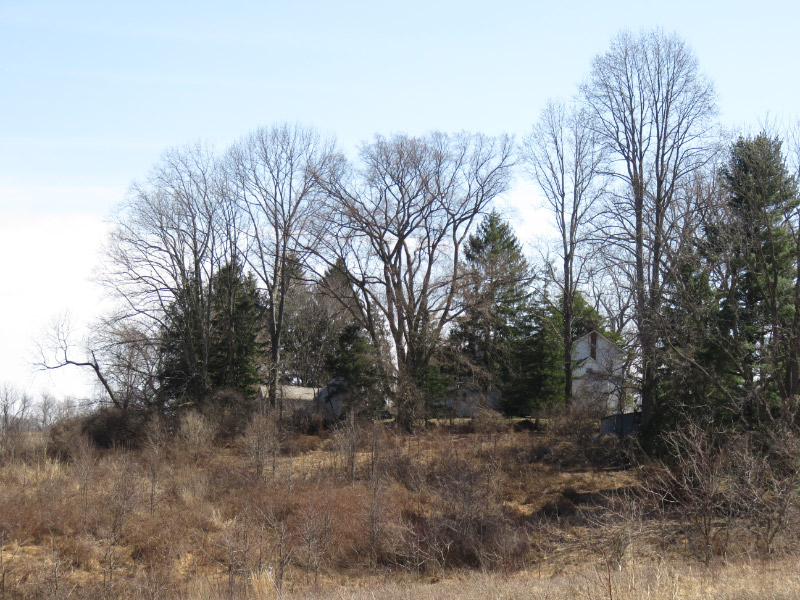
The farmhouse is visible from the meadow with the deciduous trees still bare.
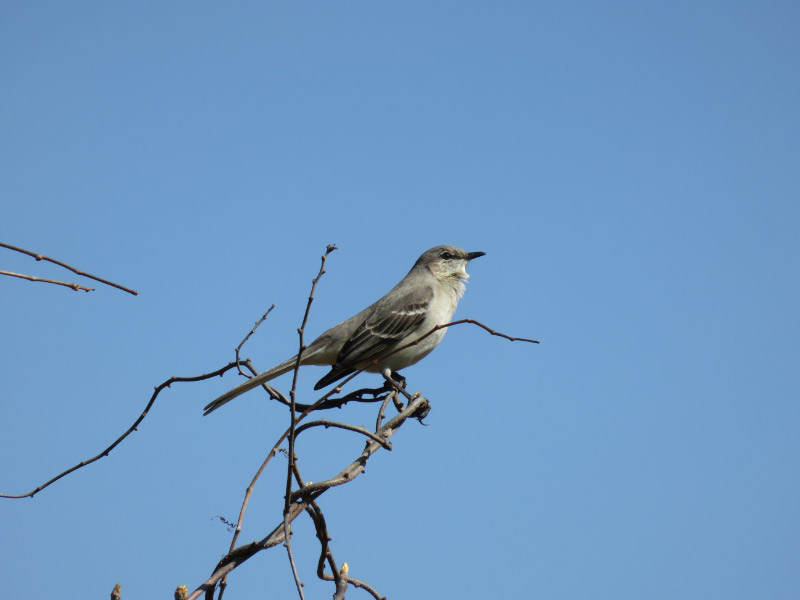
I stood photographing a mockingbird for several minutes. At first I thought the breeze was ruffling the neck feathers but then I realized that the neck moves a lot as the bird creates his sounds (mockingbirds have quite a repertoire).
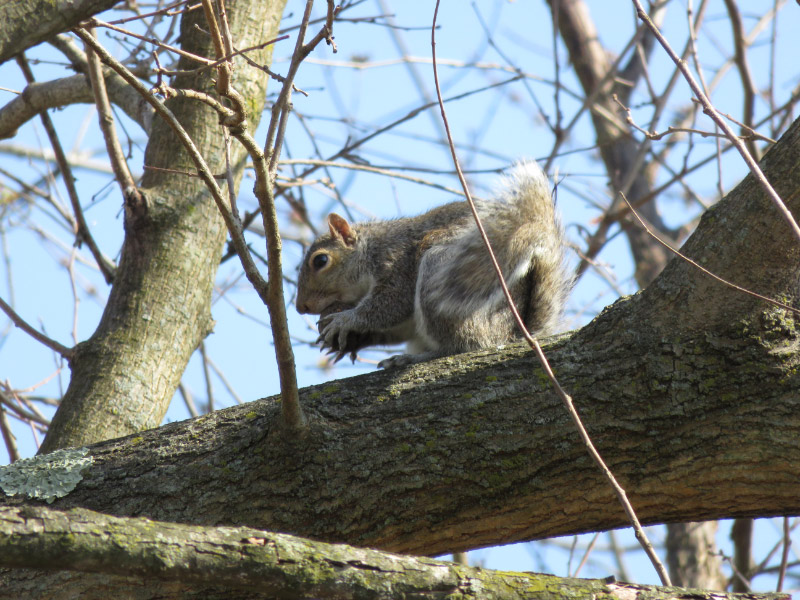
Squirrels are still finding last season’s nuts – and eating them noisily. I would not have noticed this squirrel without that noisy munching.
The maple ‘tree within a tree’ is still one of my favorite stops along the stone wall. Theorizing about why it is that way….and looking for snake skin sheds which seem to be there frequently…are always a hit with hiking groups.
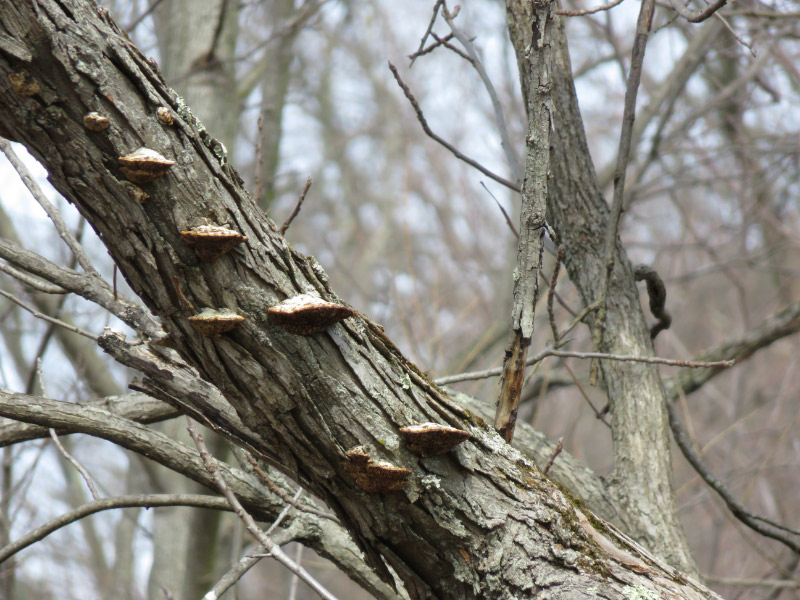
These shelf fungi caught my eye – like little steps up the large branch.

Last season’s dogbane still holds some of its seeds in the meadow.
So even at the end of winter – beginning of spring, there is a lot to see here. It is a calm before the riot of growth that comes in April and May.





